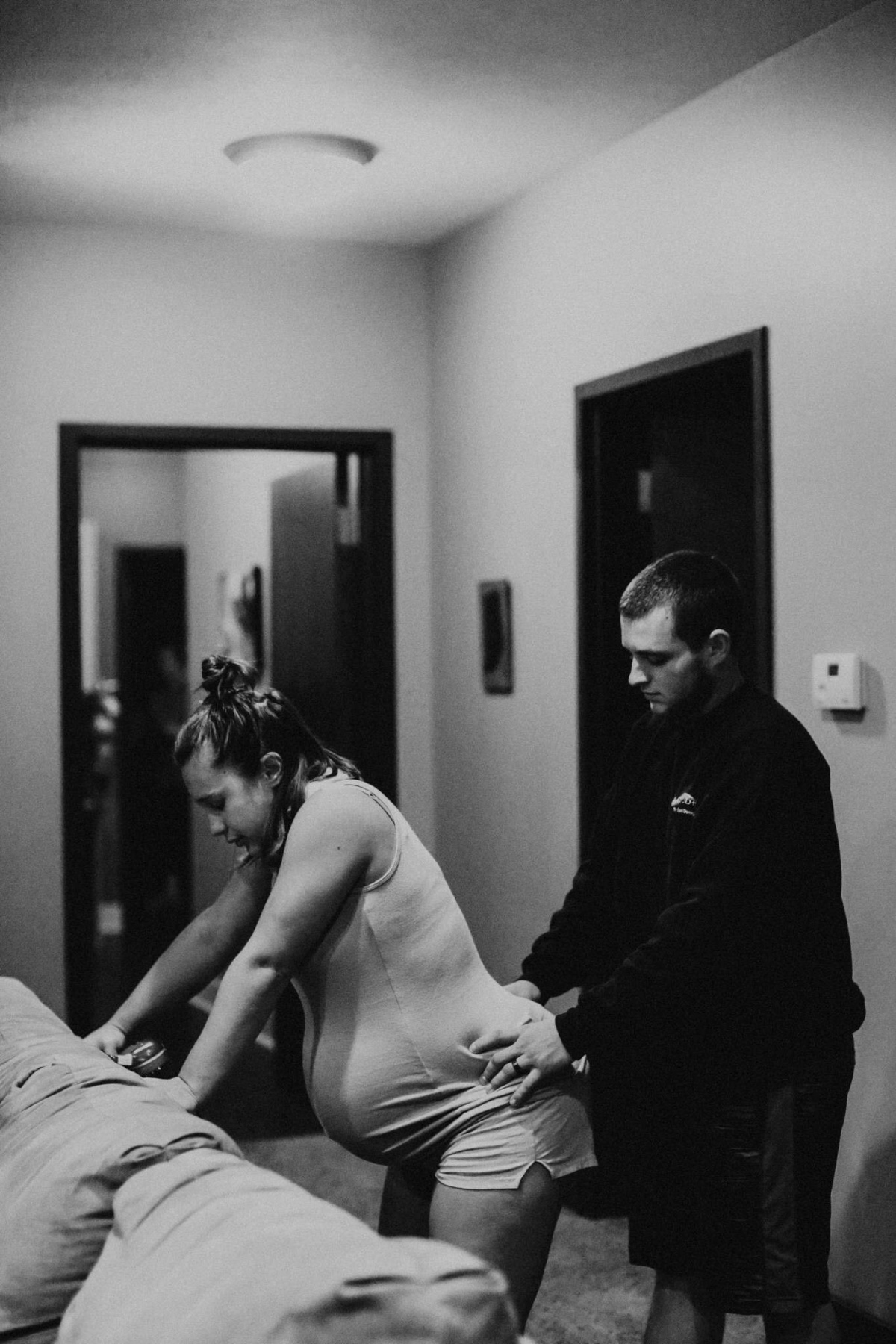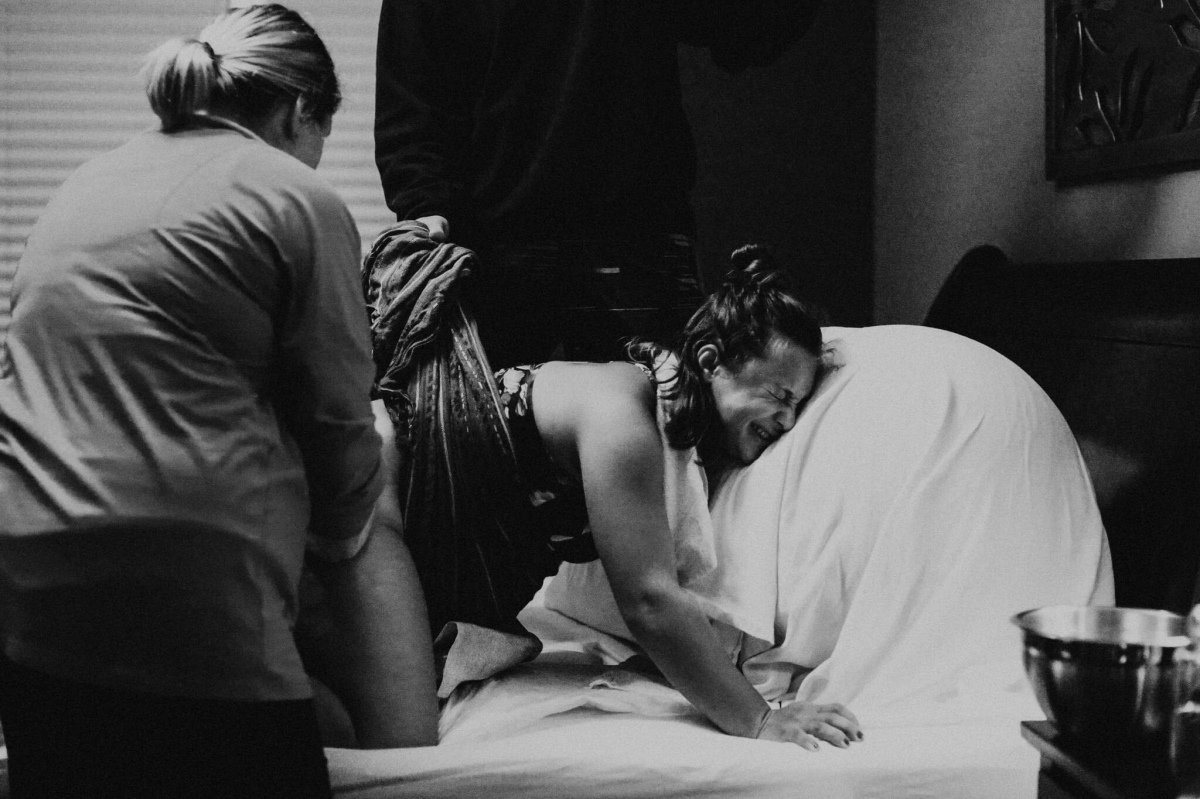Recently I was asked the question, “Why would anyone want a natural, unmedicated birth? What’s the point?” And I have to say, I was caught off guard and couldn’t gather my thoughts quickly enough to give a good reply.
I completely understand the question. I mean if you can bring life into the world in pain and exhaustion OR numb and rested why would anyone choose the pain?
It seems absurd when you put it like that and yet many women are striving for a medication-free delivery. So what’s motivating them? There are lots of great reasons but first, let’s discuss a not-so-good reason for natural birth.
Don’t Do it for the Cookies
Many women who want a natural birth are discouraged by naysayers who tell them there are no special cookies or trophies for women who birth unmedicated. They are told not to try to be a hero and they are reminded that it doesn’t make them a better woman or a better mom.
And they are correct.
Fortunately, most moms who choose to give birth naturally are completely aware that there will not be a special prize waiting for them at the end. They know there’s no badge of courage and that motherhood will still be full of challenges no matter how they give birth.
Trust me, moms who attempt a natural birth are not looking for a reward and they aren’t trying to prove that they are, in any way, better than the mom with the epidural or scheduled cesarean.

So why do they do it??
Natural birthings mama’s do so mainly because they have done their research. They know that one intervention usually leads to another and each intervention carries risk. Not only that, but they know that the body’s natural process of giving birth includes many benefits of its own and they truly want to experience all of it.
Cascade of Interventions
The Cascade of Interventions is a term used to describe the concept that one intervention often leads to another.
For example, what may start out as a simple membrane sweep to induce labor could quickly turn into prelabor rupture of membranes without contractions, which could turn into heading to the hospital for Pitocin, which could turn into fetal distress, which could ultimately turn into a cesarean section, a major abdominal surgery.
Epidurals specifically can be a huge player in the cascade game. Many first time moms are unaware that getting an epidural often means getting a bladder catheter which increases their risk of bladder infection. Secondly, epidurals often weaken contractions and Pitocin is used to strengthen them. Furthermore, due to the fact that epidurals numb the body from the waist down, laboring women are stuck in bed. Because movement is key to progress, labor is usually longer, often the pushing stage is longer, and episiotomy, forceps, and vacuum extraction are more likely to be used.
While of course, none of those things are guaranteed and often interventions work beautifully, natural minded mamas prefer to stay as far away from this cascade as possible. They would rather not introduce anything into the labor process that may overcomplicate things unnecessarily. By letting their body dictate what and when things happen, they are hoping to experience a relatively smooth and straight forward labor.
Risks of Interventions
Beyond the fact that one intervention leads to another, every pregnant woman needs to know that each intervention carries inherent risk with it. For example, narcotics given to decrease pain often lower the baby’s heart rate and he or she is more likely to have low APGAR scores at birth and slowed breathing [source].
Epidurals carry many risks that are often not fully discussed with a laboring woman who is ready for pain relief.
As mentioned before, epidurals may prolong the pushing phase of labor and forceps or vacuum extraction may be necessary. Severe perineal tearing is more likely because of this.
Secondly, epidurals often lower blood pressure which may make the mother lightheaded and lower the baby’s oxygen level. This event may warrant an emergency cesarean.
Next, women with an epidural are likely to develop a fever. Because it’s unclear if the fever is simply a side effect of the epidural or the result of an infection, both mom and baby will usually need antibiotics after delivery.
Additionally, around 1% of women who receive an epidural will endure spinal headaches after delivery. These are often debilitating and may require another procedure to fix. Because the first few weeks postpartum are already full of challenges, spinal headaches can be an unwelcome hindrance.
Furthermore, the mother may become drowsy, experience slowed breathing, become extremely itchy, or have an achy back. She may get an infection at the injection site and need to be treated with antibiotics.
Between 10-12% of laboring women will not receive adequate pain relief from an epidural. Sometimes they only go numb on one side of the body but continue to feel contractions on the other.
Finally, serious complications from an epidural include nerve damage, paralysis and seizures, but these are extremely rare and death by epidural is almost non-existent.
For a full review of the benefits and risks of epidurals click here.
Of course, these risks are low and many women have no issues with epidurals at all, but because there is always a chance, many women choose to opt out of medical pain relief and aim for a natural birth instead.

The Beauty of the Natural
Besides the risk of intervention, natural birth is also full of benefits. Because an unmedicated laboring women can feel everything happening, she is often able to be more in tune with her body. This allows her to instinctively know which position she should move into to help baby descend and continue progressing and she has the mobility to get into any position needed. She is able to push in a variety of different ways including standing, squatting and on all fours. She can feel exactly when and how to push so second stage of labor is often shorter and more effective. She is less likely to tear because she can feel the pressure of her baby moving down allowing for a more gentle descent. Putting all of this together, her recovery is often quicker and she is comfortable walking around independently before a women with an epidural has even gotten the feeling back in her legs.
Because natural birth is an uncomplicated process, labor can happen in an environment that is more conducive to progress. Fear, distraction, and mental stimulation all inhibit the body’s ability to labor effectively. Bright lights, beeping monitors, frequent interruptions and hospital intake questions can all contribute to stalled or slowed labor. On the other hand, the absence of interventions means a woman can labor at home or in a birth center where she is more comfortable, uninterrupted, unhindered, and in greater control of who she has in her space. She is more relaxed and less afraid and her body can labor on. Because of this, the natural birth process often works more smoothly than when interventions are added in without medical necessity.
Though we have made it clear that there is no trophy or special cookies for a natural birthing mama, she may receive a “hormone cocktail” after delivery that leaves her feeling energized and exuberant throughout the beginning of the postpartum period. This is because the body makes Endorphins in response to feeling pain that decrease discomfort and increase positive sensations. When women endure labor unmedicated, they will receive endorphins at full force as well. Cheers to the natural birth high!
Finally, many women find the process of giving birth naturally to be very empowering. Labor is an incredible feat and nearly every woman reaches a point in delivery where she thinks she cannot continue. But when she presses on, she finds out that her body was created to do difficult and powerful things and she discovers new determination and courage that she never knew she had. Women who strive for a natural birth see the beauty in the process and they want to experience it fully.
Keeping it in Perspective
In summary, natural birth is something to plan for because it is less complicated, less risky and it often works beautifully. However, it’s important to keep things in perspective and hold a healthy view of any birth plans a woman may have. Labor is unpredictable and try as we may, there are always factors we simply cannot control. Serious complications do arise and women must be prepared to meet medical intervention with gratitude when it is truly needed. While natural birth might be the goal, healthy birth is the ideal and sometimes medicine is the best way to achieve that.
Related: To the Mama Whose Natural Birth Plan Fell Through
As with any decision, every pregnant woman must do her own research, weigh the pros and cons of each option, assess how much risk she is willing to carry and then decide what is best for her. This looks totally different for different women and that’s completely fine. But I hope this gives you a better understanding of why anyone would willingly want to give birth unmedicated. As always, if you have further questions about this concept, feel free to reach out! I look forward to hearing from you soon.











